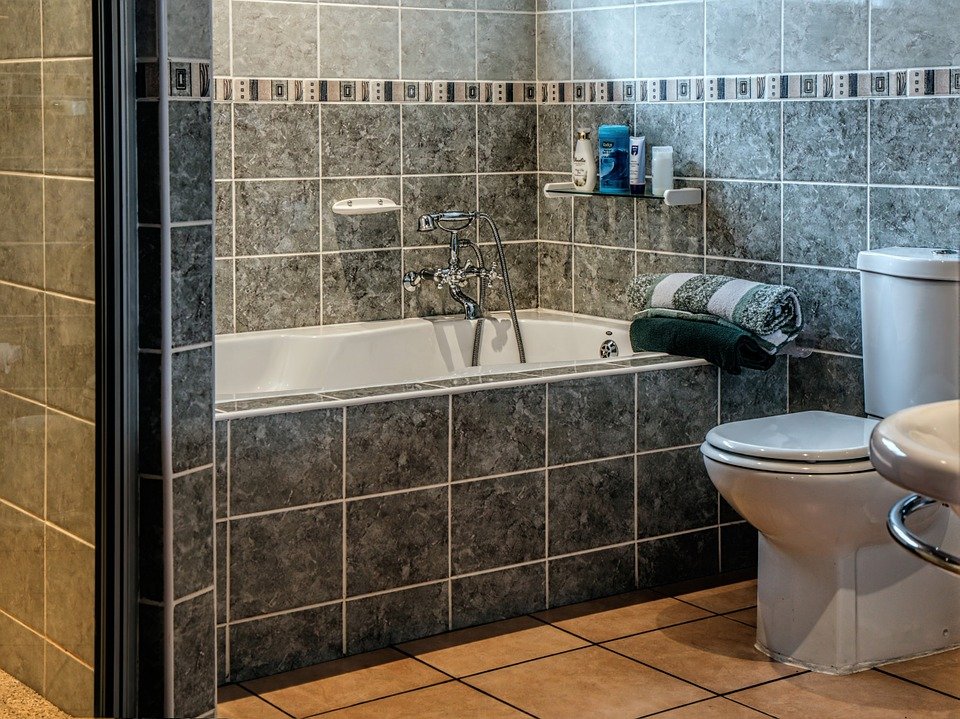If you have ever been to a tile store, you know how easy it is to get overwhelmed. With an endless variety of colors, designs, patterns, and materials, making the right choice for your bathroom is tough. So how do you decide on which bathroom tiles are best for you?
Answering the question is tough, but we share how you can choose your bathroom tiles in easy steps in this post. After all, tiles protect your bathroom floor and walls while decorating the space as nothing else can. From the material to the color and pattern and the area you would want to cover with tiles, this guide will help you get clarity to discover the best tiles for your bathroom. So let’s get started.
The Area You Want to Cover with Tiles
Before you start choosing tiles for your bathroom, the designer’s secret for choosing bathroom tiles is to decide on the area you want to cover with tiles. Do you want tiles for your bathroom floor only? Or do you want to cover your walls as well? What about tiles for the shower and tub surrounding? A good approach is to start with the floor and then decide on the walls for the shower and tub.
Tiles for the Bathroom Floor
Tiles on your bathroom floor are a must, so determine the size of your bathroom floor to estimate the tiles you will need for your bathroom.
Tiles for Shower and Tub
Once you determine the floor area, you want to cover with tiles, next you need to think about the shower and tub. For your wall with the shower, it’s best to go 12 inches or more above the showerhead, so your wall with the shower is easy to clean and maintain.
If you have a bathtub installed in a separate area from your shower, it’s a good idea to go for tiles around your tub. Ideally, the wall behind the tub should have tiles, so it’s easy to clean and maintain. Moreover, if you have a free-standing tub, make sure to have tiles around the tub. However, the area you should cover around your tub depends upon the height of your tub.
Read Also: 8 Tips to Build Your Dream Bathroom
Decide on Your Budget
Once you have determined the area you want to cover with tiles, next is the most critical step for choosing tiles for your bathroom; determining the budget. Once you decide on the area of your bathroom that needs tiles, you can have a good idea of how much you are expected to spend on getting tiles for your bathroom.
With the budget in mind, you can then choose the right material for your bathroom tiles.
Choosing the Right Bathroom Tile Material
When choosing the right bathroom tile material, it’s best to understand the pros and cons of different types of bathroom tile materials before you make the choice. Remember that you can use more than one bathroom tile material and choose various colors and patterns using the same material. Some of the popular materials for bathroom tiles include the following.
Ceramic
Ceramic is one of the most popular bathroom tiles material, given that it gives a fantastic look and is budget-friendly. If budget is a constraint, then choosing ceramic tiles for your bathroom is your best bet.
Porcelain
Another great alternative that can enhance your bathroom’s appeal is porcelain. It is more expensive than most of the other bathroom tile materials. However, it is one of the most durable, sturdy, and easy to maintain alternatives.
Glass
Glass is often the designer’s secret for choosing bathroom tiles. Glass tiles can be a beautiful addition to your bathroom, especially when you want your bathroom to express your personality. However, let’s not forget that glass bathroom tiles are slippery and are not as durable as other bathroom tile materials.
Natural Stone
If you want to bring in nature inside your bathroom, there is no better way than choosing natural stone for your bathroom tile material. Natural stone is beautiful and adds aesthetic appeal to your bathroom. However, it is more costly and requires a lot more maintenance than other bathroom tile material alternatives.
Now that you know the pros and cons of several bathroom tile materials, you can move on to the next step for choosing tiles for your bathroom.
Tile Shape and Size
Following the choice of material, you also need to consider the shape and size of the tile you want in your bathroom. Traditionally, most homeowners go for square or rectangle-shaped tiles, but these are not the only shapes. You can go for non-traditional shapes, including hexagon and kite, depending upon the size of your bathroom walls and the layout you want to create. You can also use a combination of different shaped and sized tiles depending upon the size of the floor and your walls.
Your Choice of Bathroom Layout
Even with the traditional rectangle and square-shaped tiles, you can choose between several layout patterns, including diagonal, basketweave, and several others, to give a unique pattern to your bathroom walls.
Go for Light and Airy Colors
As we move towards the end of choosing bathroom tiles in easy steps, let’s not forget the color of your bathroom tiles. It’s always best to go for light colors for your bathroom tiles to give a wider and airy look to your bathroom, but that doesn’t mean white is the only option. You can choose between shades of gray, ivory, cream, and even pastels to give a right look to your bathroom.
Final Words
Using this guide to choosing tiles for your bathroom, you can select the best ones for your space and make the most of it.



